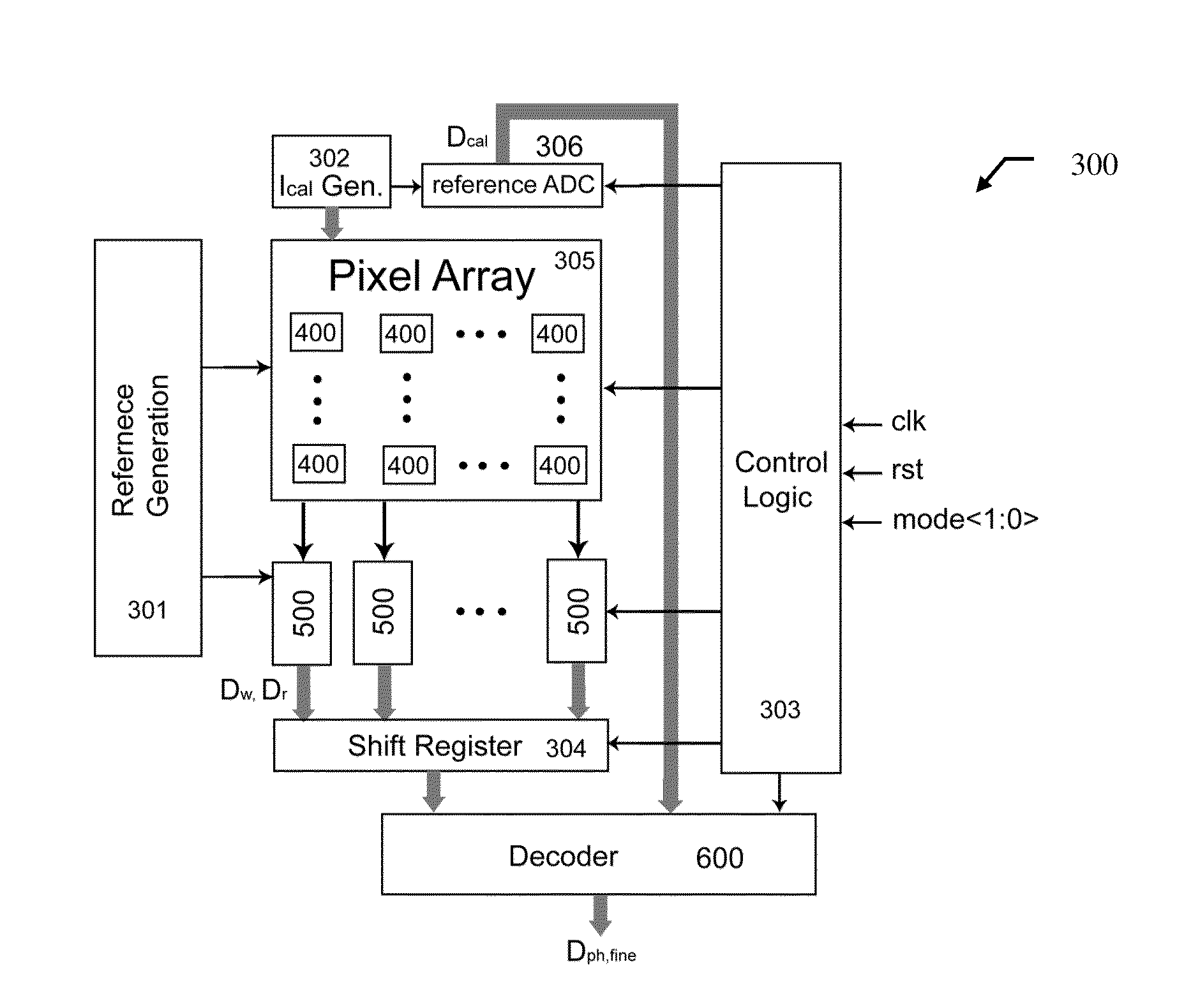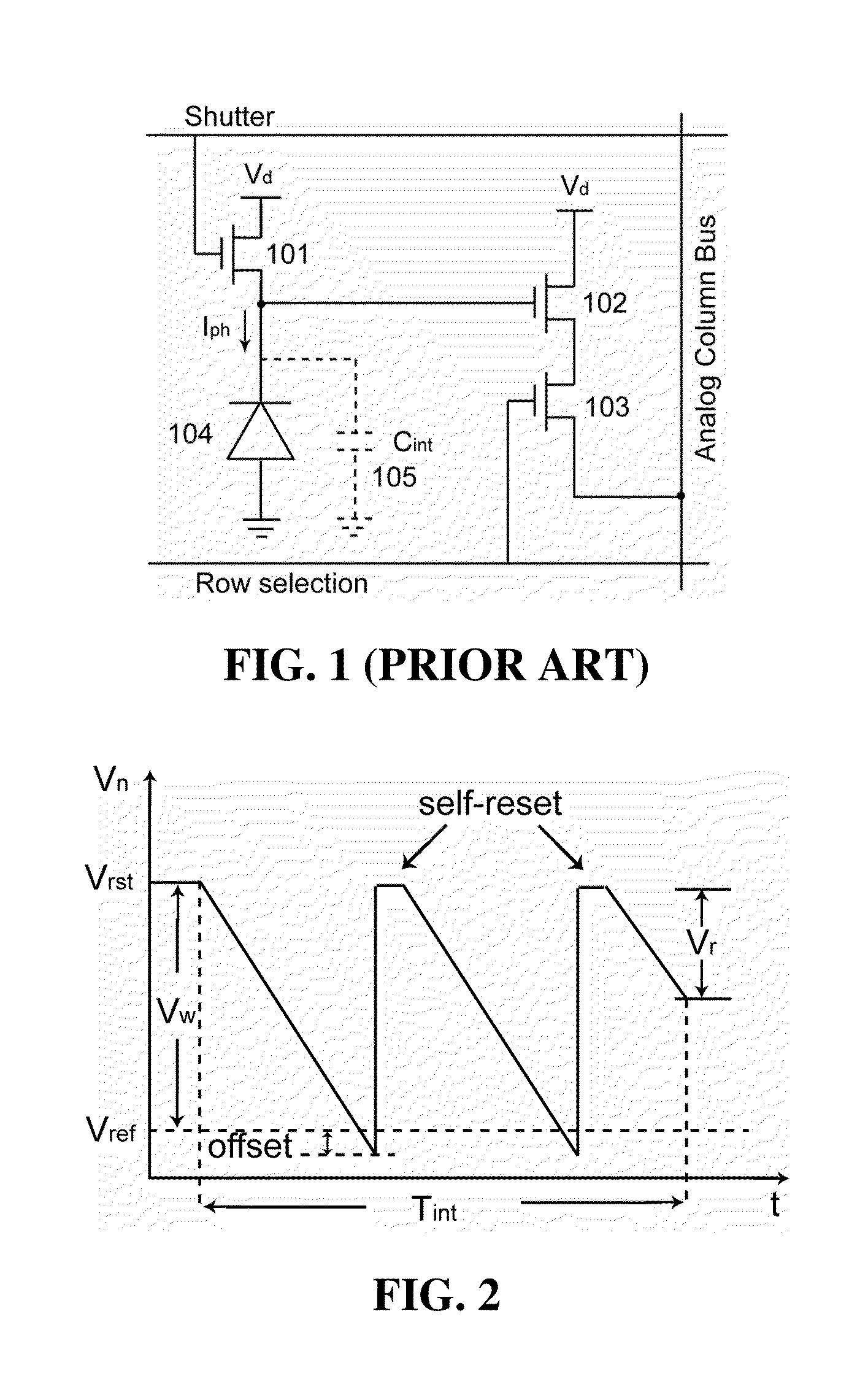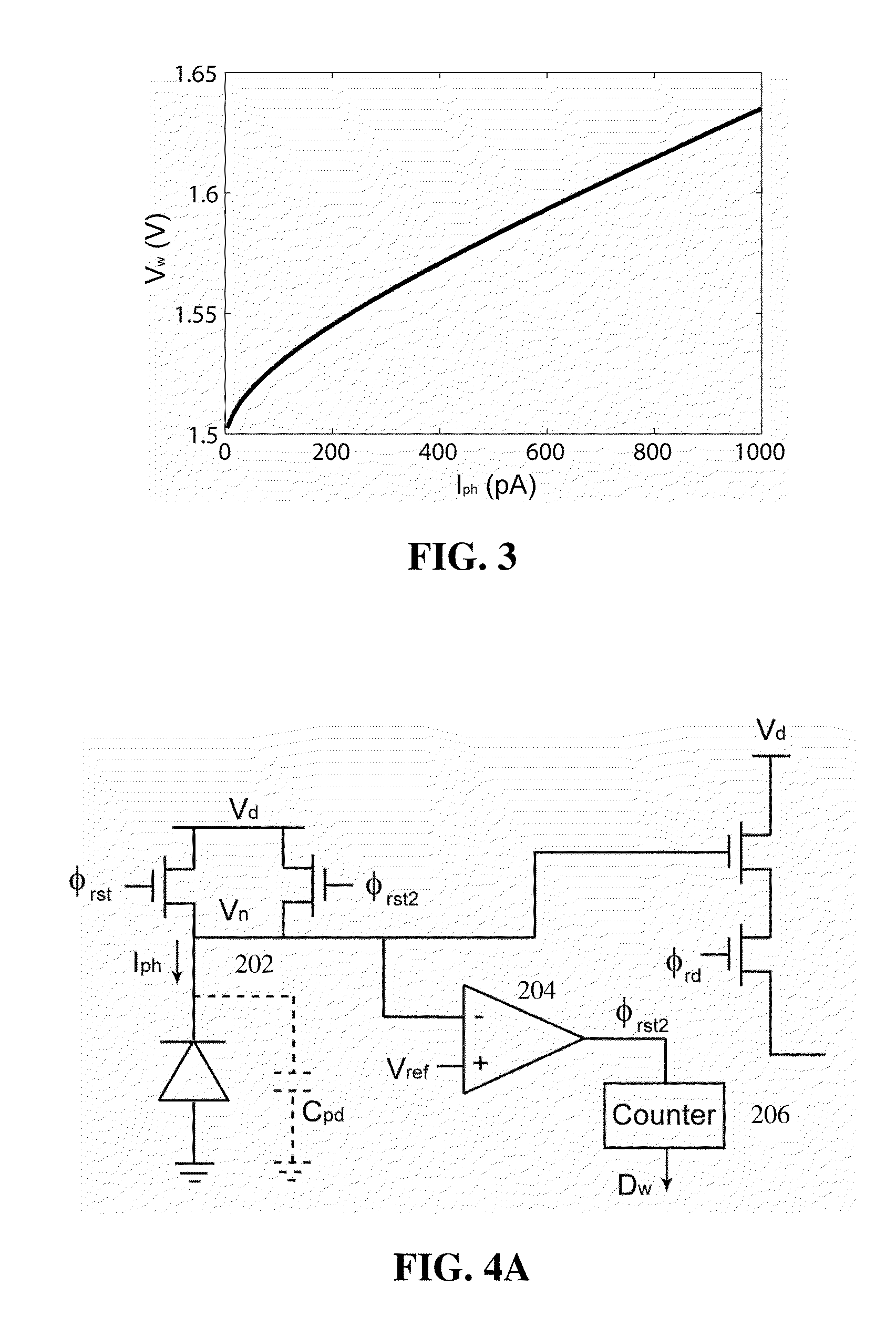Apparatus and method for improving dynamic range and linearity of CMOS image sensor
a technology of image sensor and dynamic range, applied in the field of electromagnetic field, can solve the problems of limiting the dynamic range of cmos image sensor, limiting the linearity of scaling methods over the whole dr, and limiting the performance of images from these sensors, so as to achieve high signal-to-noise ratio, high linearity, and wide dynamic range
- Summary
- Abstract
- Description
- Claims
- Application Information
AI Technical Summary
Benefits of technology
Problems solved by technology
Method used
Image
Examples
Embodiment Construction
WDR Pixel Design
[0053]The dynamic range (DR) of a pixel is limited by the well capacity as specified by
DR=VwCint / TintImin,(1)
where Imin is the minimum photo current that the sensor can detect. This is determined by the least significant bit (LSB) size of the quantizer or the pixel read-out noise level, whichever is larger. The maximum SNR of this pixel is
SNR=Vw2qVwCint+σrd2,(2)
where σrd2 is the input-referred read-out voltage noise power.
[0054]In order to design a highly linear WDR imaging sensor with high SNR, the dynamic range (DR) should be expanded linearly. In one embodiment, the DR is linearly expanded by adding a comparator 204 and a counter 206 into the pixel circuit as shown in FIG. 4A. The photo diode gets reset whenever Vn falls below the threshold voltage, as shown in FIG. 2. The number of pixel overflow events (Dw) is recorded by the counter 206. The equivalent well size in this pixel is Vrst−Vref. At the end of the accumulation, the accumulated photo voltage can be sim...
PUM
 Login to View More
Login to View More Abstract
Description
Claims
Application Information
 Login to View More
Login to View More - R&D
- Intellectual Property
- Life Sciences
- Materials
- Tech Scout
- Unparalleled Data Quality
- Higher Quality Content
- 60% Fewer Hallucinations
Browse by: Latest US Patents, China's latest patents, Technical Efficacy Thesaurus, Application Domain, Technology Topic, Popular Technical Reports.
© 2025 PatSnap. All rights reserved.Legal|Privacy policy|Modern Slavery Act Transparency Statement|Sitemap|About US| Contact US: help@patsnap.com



